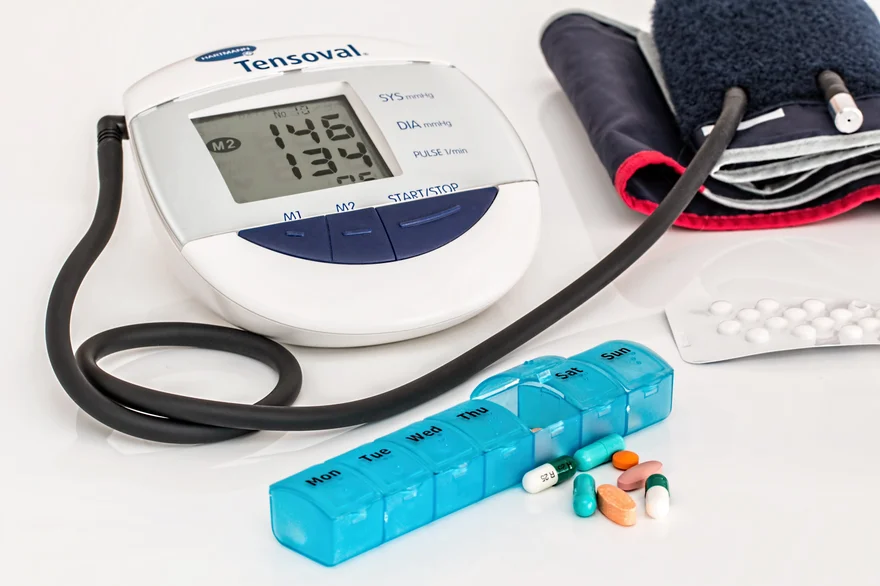Preventive Healthcare
9 Commonly Ignored Diseases in Women
2481 Views
0

Women often prioritise the health and well-being of their loved ones over their own. But it is important to remember that neglecting their own health can have serious consequences. Unfortunately, there are several diseases that are commonly ignored by women, which can lead to long-term complications if left untreated. In this blog, we will shed light on a few such diseases including their symptoms and risk factors. So read on and empower yourself with knowledge about your body!
List of 9 Commonly Ignored Diseases in Women
Here is a list of 9 commonly ignored diseases in women, along with a brief elaboration on each:
- Polycystic Ovary Syndrome (PCOS)
- Endometriosis
- Ovarian Cancer
- Urinary Tract Infections (UTIs)
- Osteoporosis
- Menstrual Disorders Including PMS
- Gestational Diabetes
- Breast Cancer
- Anaemia
Polycystic Ovary Syndrome (PCOS)
Polycystic ovary syndrome (PCOS) is a hormonal disorder that affects women of reproductive age. It is one of the most commonly ignored diseases in women, yet it can lead to serious health complications if left untreated.
The symptoms of PCOS vary from woman to woman and include irregular periods, weight gain, acne, excessive hair growth, and infertility. Women with PCOS are also at an increased risk of developing type 2 diabetes and cardiovascular disease.
Treatment options for PCOS typically involve lifestyle changes such as weight loss through healthy eating habits and regular exercise. Medications such as birth control pills or metformin may also be prescribed by your doctor depending on your individual needs.
Endometriosis
Endometriosis is a painful disorder that can affect women during their reproductive years. It occurs when tissue similar to the lining of the uterus grows outside of it, causing pain and discomfort in the pelvic area.
Some common symptoms of endometriosis include painful periods, chronic pelvic pain, pain during sex or bowel movements, and infertility. Women with a family history of endometriosis are also at an increased risk for developing this condition.
Unfortunately, many women with endometriosis often suffer for years before receiving a proper diagnosis. This is because the symptoms can be easily mistaken for other conditions such as ovarian cysts or irritable bowel syndrome.
Ovarian Cancer
Ovarian Cancer is a type of cancer that affects the ovaries, which are part of the female reproductive system. It often goes undetected until it has progressed to later stages, making early detection crucial for effective treatment.
Symptoms of ovarian cancer can be easily overlooked or attributed to other health issues. These may include abdominal bloating, pain or discomfort in the pelvic region, frequent urination and difficulty eating or feeling full quickly.
Risk factors for ovarian cancer include age (the risk increases with age), family history of ovarian or breast cancer, hormonal imbalances and certain genetic mutations.
Urinary Tract Infections (UTIs)
Urinary Tract Infections (UTIs) are a common health problem that affects millions of women worldwide. UTIs occur when bacteria enter the urinary tract, causing irritation and inflammation. The symptoms of UTIs include pain or burning during urination, frequent urination and cloudy or foul-smelling urine.
There are several risk factors associated with developing a UTI. Women who have recently had intercourse are more likely to develop a UTI due to the introduction of bacteria into the urethra. Additionally, women who use certain types of birth control such as spermicides or diaphragms may also be at higher risk for developing UTIs.
Osteoporosis
Osteoporosis is a disease that affects the bones, making them weak and more susceptible to fractures. This condition commonly occurs in women after menopause but can also affect men. It often goes unnoticed until a bone fracture happens.
The risk factors for osteoporosis include ageing, low calcium intake, lack of physical activity, smoking, excessive alcohol consumption and some medications. Women who have undergone early menopause or had their ovaries removed are at higher risk.
Prevention measures include eating enough calcium-rich foods such as dairy products and leafy greens along with vitamin D supplements, staying active through weight-bearing exercises, avoiding smoking and limiting alcohol intake, and having regular screenings, especially after 50 years of age.
Menstrual Disorders Including PMS
Premenstrual syndrome (PMS) is the most common menstrual disorder affecting over 90% of women at some point in their lives. PMS symptoms include bloating, breast tenderness, fatigue and mood changes such as irritability or depression.
Another type of menstrual disorder is Dysmenorrhea, which causes severe cramps during menstruation. It affects around 20-50% of women who experience painful pelvic sensations that may also be accompanied by nausea or vomiting.
Menorrhagia is another condition where a woman experiences heavy menstrual bleeding that lasts for more than 7 days. This condition can lead to anaemia due to blood loss and requires immediate medical attention.
Gestational Diabetes
Gestational diabetes is a type of diabetes that affects women during pregnancy. It occurs when the body cannot produce enough insulin to regulate blood sugar levels. This condition can be harmful both for the mother and her baby.
The symptoms of gestational diabetes are similar to those of regular diabetes, including frequent urination, excessive thirst and fatigue. However, many women with this condition may not experience any noticeable symptoms.
Risk factors for developing gestational diabetes include being overweight or obese before pregnancy, having a family history of diabetes, and being over 25 years of age. Women who have had gestational diabetes in previous pregnancies are also at higher risk.
Breast Cancer
Breast cancer is a type of cancer that arises in the breast tissue. It is one of the most common cancers found in women worldwide. While breast cancer can also occur in men, it is much less common.
Symptoms of breast cancer include changes to the breasts such as lumps or bumps, nipple discharge or inversion, skin dimpling or redness and swelling. Early detection through self-examination and regular screening mammograms are important steps for detecting any signs of this disease.
Risk factors for developing breast cancer include age, family history, genetics, certain lifestyle choices like alcohol consumption and smoking as well as exposure to hormones like oestrogen.
Anaemia
Anaemia is a condition that affects millions of women worldwide. It occurs when there are not enough red blood cells or haemoglobin in the body, leading to fatigue and weakness. Iron deficiency is one of the most common causes of anaemia among women.
Symptoms can include dizziness, shortness of breath, pale skin and headaches. Women who experience heavy menstrual periods or bleeding disorders are at higher risk for developing anaemia. Pregnant women are also more likely to develop anaemia due to increased blood volume demands.
Conclusion
Women's health issues are often ignored or overlooked, which can lead to serious consequences in the long run. It is important for women to be aware of these commonly ignored diseases and their symptoms so that they can seek medical attention early on. Regular check-ups and screenings are important for maintaining good health. Metropolis Healthcare labs provide a wide range of tests that can help detect these diseases at an early stage, ensuring timely treatment and better outcomes.
Contact us today to learn about the wide range of lab and home tests that we offer at the best rates!























 WhatsApp
WhatsApp